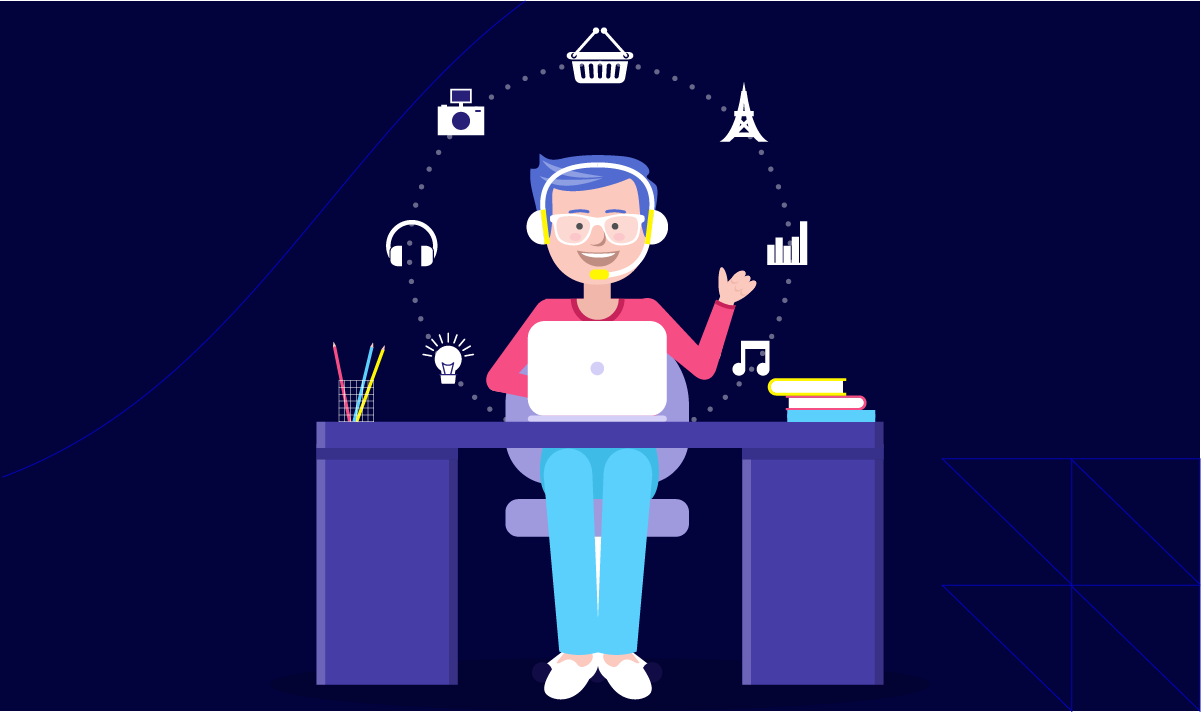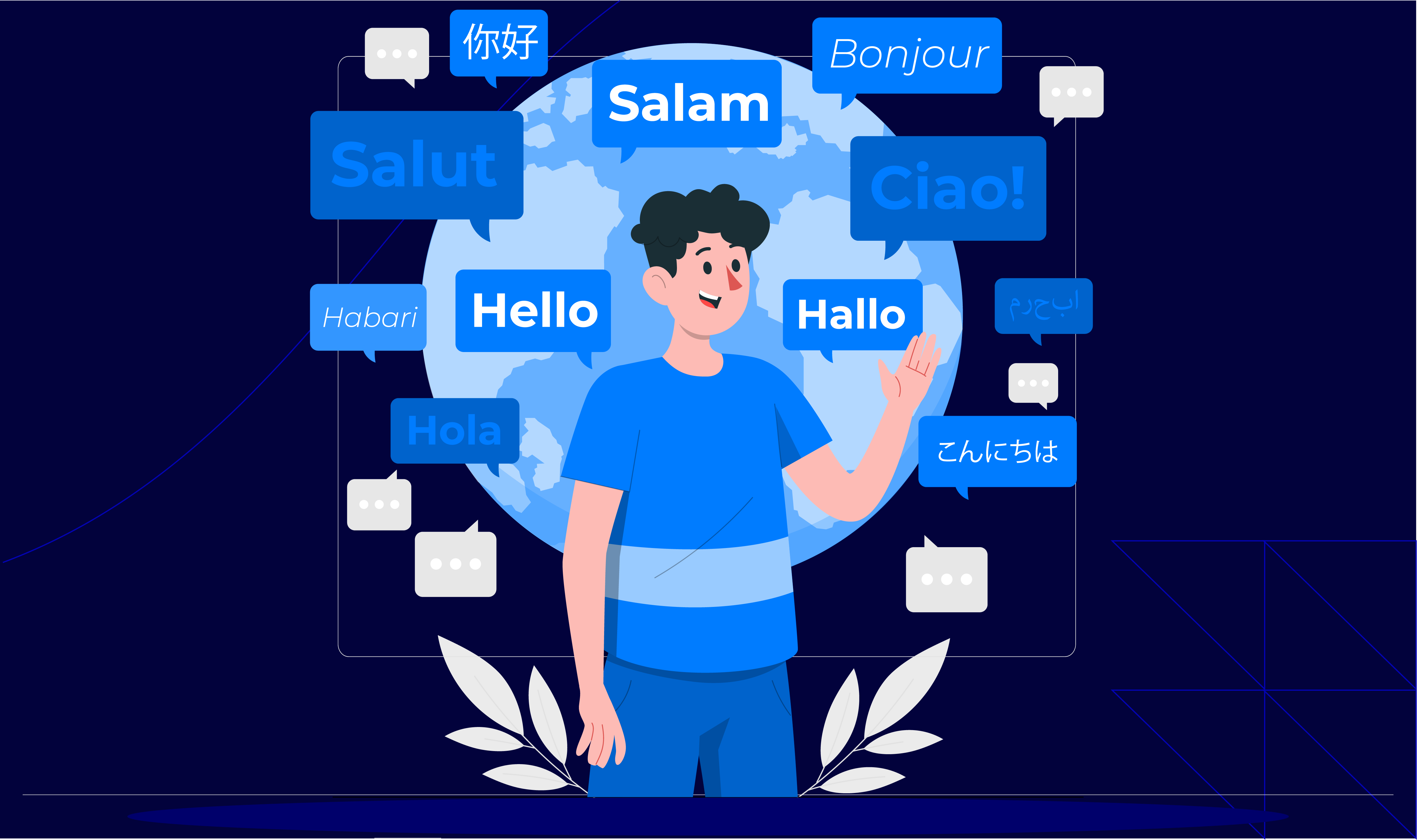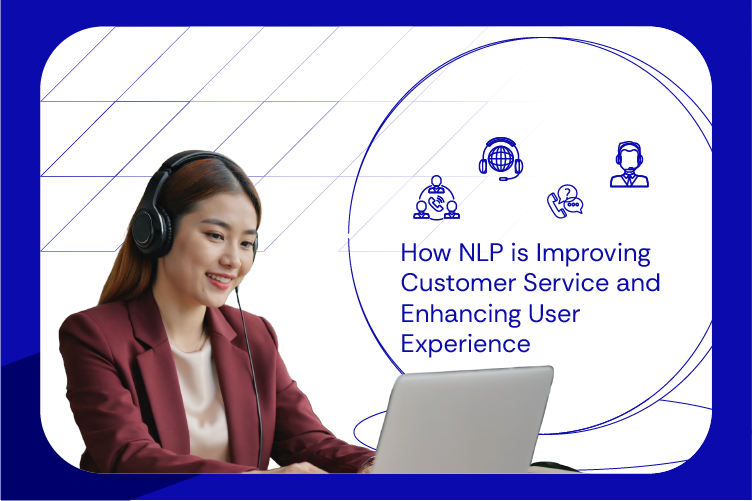Key Takeaways
- Natural Language Processing (NLP) is reshaping how brands improve customer service, making it faster, more natural, and deeply personalized.
- From chatbots to sentiment analysis, NLP in customer service creates smoother, more human-like interactions at scale.
- Conversational AI for customer support helps businesses respond faster while learning from every conversation.
- The result? Happier customers, better insights, and support teams that work smarter.
What Is NLP and Why Does It Matter in Customer Service?

NLP (Natural Language Processing) is basically how we teach computers to understand human language in the way we actually talk. Every time you:
- Ask Siri to set a reminder
- Type “Where’s my order?” into a chatbot
- Or say “I need help with my account” over the phone and get routed correctly
You’re using NLP in action. So, what does that mean for customer service?
Well, your customers aren’t sitting around crafting perfect, grammatically correct, spell-checked and polite emails with numbered bullet points and technical terms.
They’re saying things like:
- “Hey, my delivery’s late again.”
- “I got charged twice??”
- “Why isn’t this working?”
And if your support system can’t make sense of that language (or worse, responds with a robotic “I didn’t understand your request”), you’re creating frustration and losing trust. In fact, even today, 55% of customers believe that they are better off speaking to a human agent when it comes to resolving complex issues.
That’s why NLP is such a game-changer. It allows your support tools (whether that’s a chatbot, a helpdesk, or a voice bot) to:
- Go beyond what the customer has typed to understand what the customer really means
- Respond with relevant, helpful answers
- Learn from patterns to improve future interactions
Instead of giving canned responses or missing the point entirely, NLP helps your systems respond in ways that feel natural and helpful. That’s why more and more businesses are turning to NLP in customer service to:
- Reduce response time
- Increase resolution accuracy
- Deliver smoother, more personalized experiences at scale
Let’s dive right into how NLP is improving customer service and enhancing user experience.
How NLP Is Improving Customer Service In Real Time

So what does NLP actually look like in action? Let’s break it down with some everyday examples.
1. Smarter Chatbots Delivering Faster, Friendlier Support
Today’s conversational AI for customer support is very sophisticated. It doesn’t just scan for keywords, but it understands natural language the way people actually speak. That includes:
- Casual phrasing
- Typing errors
- Abbreviations
- Often, emojis
An NLP-powered chatbot can:
- Figure out the customer’s intent (refund, exchange, order tracking, etc.)
- Pull up relevant info from their order history
- Trigger the right workflow, or route them to a human if needed
This matters a great deal, because when bots are smart enough to hold up their end of the conversation:
- Customers get quick, accurate answers
- Agents get fewer repetitive questions
- Your team gets to focus on higher-impact issues
Even better? These bots keep learning. Every interaction helps them get better at understanding intent, spotting patterns, and handling new types of queries. So over time, your support feels faster and more personalized.
2. Sentiment Analysis That Actually Understands Tone
NLP doesn’t just listen to what customers say, but it has the capability to sense how they feel. NLP-powered sentiment analysis can read between the lines and figure out:
- Is this customer frustrated?
- Are they confused or overwhelmed?
- Are they thrilled with the experience?
- Or is this a “fix it now or I’m gone” kind of situation?
That kind of emotional context is gold. For instance, say two messages come in at the same time:
- One says, “Hey, just checking the status of my order”
- The other says, “Where’s my order? I’ve emailed twice. FIX THIS.”
Without sentiment analysis, both tickets might sit in the same queue. But with NLP, your system can instantly flag the angry one as high priority, getting it in front of the right agent. However, sentiment analysis adds value that goes beyond just dealing with angry customers. It can also help you:
- Spot happy customers worth asking for a review
- Detect confused or hesitant buyers who may need reassurance
- Identify emerging problems before they blow up
- Track emotional trends over time
3. Personalized Responses at Scale
When you’re handling hundreds of tickets a day, expecting agents to personalize every single response manually is just not realistic. That’s where NLP steps in. Let’s say a returning customer messages in with:
“Hey, I ordered the navy hoodie last week, do you know when it’s arriving?”
Now, instead of giving a generic “Please provide your order number” reply, an NLP-enhanced system can:
- Instantly recognize the customer’s name and history
- See that they’ve bought from you before (and what they bought)
- Know they prefer chatting in English
- Understand that this isn’t a complaint, but a simple tracking query
And then? It can respond with something like:
“Hey there, Jessica! Your navy hoodie is on its way and should arrive by Wednesday. Let us know if you’d like tracking updates via SMS!”
It’s fast, it’s friendly, and it makes the customer feel like they’re more than just another ticket in the system. This is where NLP shines.
It brings together:
- Language understanding to interpret the question
- Context awareness to know who the customer is and what they’ve done
- Tone matching to keep things human and on-brand
This matters because studies show that 73% of today’s customers expect brands to deliver personalized customer experiences. And when customers get the service they expect, they are likely to stick around.
4. Speech-to-Text and Voice Support: NLP Goes Beyond the Keyboard
Not every customer wants to type. Some people just want to talk to someone. Others are driving, multitasking, or simply prefer using their voice. NLP’s got that covered, too. Natural Language Processing is powering voice support services in some great ways.
Modern voice bots and virtual assistants use NLP to:
- Understand what customers are actually saying (accents, pauses, “ums” and all)
- Respond with relevant, conversational answers
- Carry on a fluid back-and-forth without sounding like a script
NLP also powers real-time transcription tools that convert customer calls into searchable text. Why is that a big deal? Because now you can:
- Spot patterns in customer complaints or feedback across dozens of calls
- Train new agents faster using real examples and tagged transcripts
- Review calls for quality and compliance without listening to hours of recordings
- Track escalation trends, recurring product issues, or common support gaps
Basically, NLP turns voice support into something measurable, searchable, and improvable.
5. Smarter Knowledge Base Searches: Just Ask Like a Human
Searching through a help center shouldn’t feel like solving a puzzle. But too often, it does. That’s exactly where NLP steps in and changes the game. Instead of matching keywords, it understands intent. That means your customers can type things the way they naturally would:
- “How do I exchange something?”
- “I need help with a damaged item.”
- “Can I get a refund for this order?”
Why does this matter? Studies indicate that a staggering 91% of customers would use a knowledge base or help center if they could get the answer to their questions there. That’s why your help center should be a place that actually helps. When search works the way people think and speak:
- Customers find what they need faster
- Support ticket volume goes down
- Your team gets to focus on more complex issues
- Customers walk away happy that their questions got answered
How to Use NLP in Customer Service

These days, NLP tools are more accessible than ever, baked right into the platforms many businesses already use. So if you’re wondering how to bring that smart, human-feeling support to your team without getting buried in complexity, here’s your roadmap. Start with one or two of these:
- Add an NLP-powered chatbot to your site or app: Many tools like Intercom, Drift, or Freshchat come with pre-built NLP functionality that lets bots understand questions and respond with helpful, relevant answers.
- Use helpdesk software with built-in sentiment detection: Platforms like Zendesk, HubSpot, and Gorgias now include NLP-powered sentiment tagging. That means your team can see emotional cues right next to customer messages and prioritize issues more effectively.
- Upgrade your knowledge base with NLP-enhanced search: If you’ve got a help center that customers rely on, make sure it includes natural language search.
- Use voice analytics to capture tone on calls: If your team handles phone support, you can use speech-to-text tools with sentiment analysis to transcribe and tag calls. Not only does this help with quality assurance, it also gives you insights into tone, common issues, and coaching opportunities.
- Analyze FAQs and build automations around top queries: Before you build out a big system, look at your top 10 most common support questions. With even basic NLP tools, you can create smart workflows that detect and respond to those questions automatically, live web chat support, email service outsourcing, or even voice. It’s a low-risk, high-reward way to dip your toes in and start improving customer service right away.
Smarter Service Starts With Smarter Language

By using NLP in customer service, you’re not just responding faster to customer queries, but are making conversations smarter, more personalized, and more human at scale. With the right tools and setup, you can:
- Deliver quick, relevant answers that feel natural
- Personalize responses based on tone, context, and history
- Detect customer frustration early and act fast
- Learn from every interaction and continuously improve
The beauty of NLP is that you don’t need to rip and replace your whole support system. Start small:
- Add a smarter chatbot
- Upgrade your help center search
- Use sentiment analysis to prioritize better
And if you’re not sure where to begin or how to roll this out? That’s where Atidiv comes in. At Atidiv, our team of customer experience specialists helps growing teams implement NLP in a way that’s simple, strategic, and scalable. From chatbot setup and sentiment tagging to NLP-enhanced workflows, we bring the tools and the know-how to help you create smarter support that feels more human. Partner with Atidiv to scale smarter!
FAQs On Improving Customer Service
1. What is NLP in customer service?
It’s the use of Natural Language Processing to help machines understand and respond to customer queries in a natural, human-like way.
2. How can NLP improve customer service?
It enables smarter chatbots, faster response times, better sentiment detection, and more personalized support across channels.
3. What are examples of NLP in customer support?
Conversational AI, automated FAQs, sentiment analysis, voice-to-text tools, and smart search bars are all powered by NLP.
4. Can small businesses use NLP tools too?
Absolutely. Many customer service platforms now include NLP features out-of-the-box, meaning no engineering team is required.
5. What’s the difference between NLP and AI in customer support?
NLP is a subset of AI. While AI covers a broad range of intelligent automation, NLP focuses specifically on understanding and processing human language.

